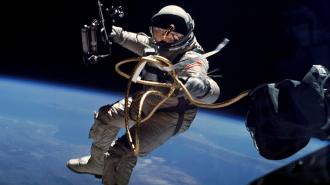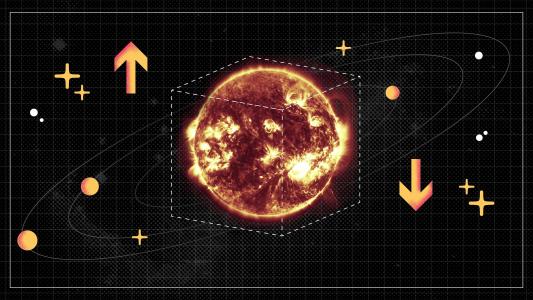NASA aims to put the first woman and next man on the moon in 2024 as part of the Artemis program — and it’s now on the hunt for those future astronauts.
On February 11, NASA announced that it will be accepting applications between March 2 and 31 from people interested in joining the agency’s 48 active astronauts in exploring space.
“For the handful of highly talented women and men we will hire to join our diverse astronaut corps, it’s an incredible time in human spaceflight to be an astronaut,” NASA Administrator Jim Bridenstine said in a statement. “We’re asking all eligible Americans if they have what it to takes (sic) to apply beginning March 2.”
As for what qualifies a person for one of the most exclusive jobs in the world, NASA is looking for U.S. citizens with master’s degrees in STEM fields, such as engineering or computer science.
It’ll also accept applications from citizens without those degrees as long as they meet an alternative requirement, such as two years of work toward a related PhD program, possession of a medical degree, or completion of a test pilot school program.
This new mission to the moon will help NASA eventually reach Mars.
Those are the minimum educational requirements, but NASA always wants astronauts to have some “real world” working experience, either two years working in a related professional environment or 1,000 hours as the pilot-in-command of a jet aircraft.
Astronaut applicants will also need to complete an online assessment and be able to pass NASA’s long-duration spaceflight physical, which includes specific vision, blood pressure, and height requirements — anyone shorter than 5’2″ or taller than 6′ need not apply.
Once the application period wraps, NASA will select a group of Astronaut Candidates who will then spend two years at the Astronaut Office at the Johnson Space Center in Houston, undergoing a rigorous training and evaluation process that includes everything from SCUBA certification to learning Russian.
As Bridenstine noted, this truly is an exceptional time to be an astronaut.
The agency landed 12 people on the moon between 1969 and 1972, but unlike in those past missions, when reaching the moon itself was largely the goal, the Artemis program astronauts will visit the moon in an effort to help NASA eventually reach Mars.
The last time the agency accepted applications, more than 18,300 people applied — and just 12 made it to the Astronaut Candidate stage.
To that end, much of the scientific study will focus on moon water, which NASA didn’t even know existed back in the 1970s. The astronauts will test the ability of in-development tech to produce drinking water for future astronauts or even split the water into oxygen for breathing and hydrogen for rocket fuel.
That’ll tie into another part of the Artemis program: a lunar outpost called the Gateway.
In addition to serving as a place for astronauts to live and work in space, the Gateway will be exactly what its name implies: a stepping stone for travel to places beyond Earth’s orbit, including Mars.
The idea is that, if NASA astronauts find that they can create rocket fuel from lunar water, a craft could launch from Earth with just enough fuel to make it to the Gateway and then fuel up there using the moon’s resources before heading deeper into space.
Applying for NASA’s next class of Astronaut Candidates is the first step along a path that may end with visiting the moon, living aboard the Gateway, or traveling to the Red Planet — but only a select few people will make it that far.
While NASA hasn’t revealed how many candidates it expects to pull from the field of applicants, the last time the agency accepted applications, more than 18,300 people applied — and just 12 made it to the Astronaut Candidate stage.
Still, the lucky few selected to be part of the Artemis generation of astronauts will have a chance to take our species farther into the cosmos than it’s ever gone before — which means next month’s application period could end up being the small step that eventually leads to one giant leap for humankind.






